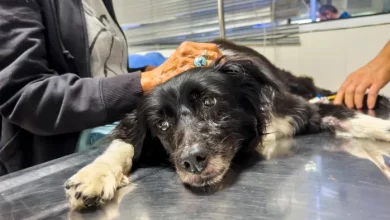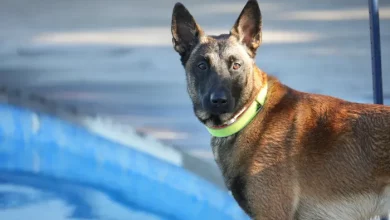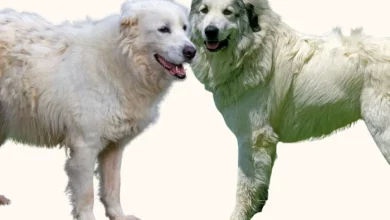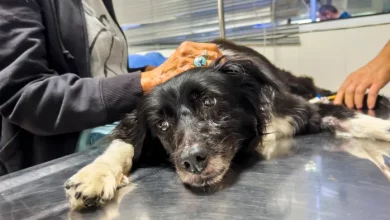Separation Anxiety in Puppies: All You Need to Know
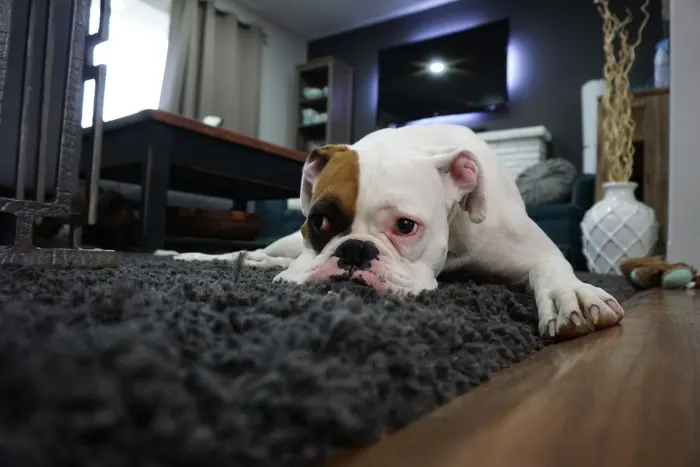
Is it possible for Puppies to Experience Separation Anxiety?
Can puppies suffer from separation anxiety? This is a great question. It is essential to know whether or not puppies can suffer from separation anxiety so you can determine if your puppy has an actual separation disorder.
Separation anxiety is not something that all puppies are immune to.
Find out how to tell if your dog is suffering from separation anxiety and what you can do about it if you notice the symptoms.
Why does it feel odd for a puppy to have separation anxiety?
The issue of separation anxiety in puppies is often minimized because it is believed that they are too young for this condition.
This belief is based on several factors. It is a common belief that puppies cannot form strong bonds with their owners because they are young.
A second belief is that puppies come from naturally curious, playful, and energetic creatures. These characteristics are often seen as the opposite of what would be considered a dog that is prone to separation anxiety.
People may think that because puppies are easily distracted and have a short attention span, they do not suffer from separation anxiety.
Can puppies have separation anxiety?
Separation anxiety can occur in puppies despite the beliefs and assumptions described above.
Steven Lindsay explains in his book Handbook of Applied Dog Training and Behavior: Adaptation that a puppy’s desire to remain close to its mother and within the familiar confines of a home is deeply ingrained.
You can demonstrate this tendency by taking a puppy away from its mother and placing it in an unfamiliar environment.
This isolation can cause significant emotional distress. The animal will repeatedly raise his voice and make great efforts to be reunited.
New puppy owners can observe these species-specific behavior patterns.
What is the evolutionary reason why puppies may show signs of separation distress?
Puppies who are left alone may develop anxiety.
They are at risk if wolf pups wander from their dens and mothers.
Recommended for You
When separation occurs accidentally, the separation-distress vocalizations of a puppy increase the likelihood of a successful reunion.
These vocalizations can help pups survive if they become separated and encourage mothers to stay near their puppies until the young are ready to be weaned.
It is important to note that dogs aren’t wolves. There are many differences between dogs and wolves.
These behaviors help young pups avoid natural disasters, increasing their chances of survival. They can also pass these behaviors on to future generations to ensure the species survives.
Did You Know?
As wolf pups grow, they will explore their environment more in the wild. They’ll do this with their siblings and members of their social groups.
The den is abandoned after approximately 10-12 weeks (Young and Goldman 1944/1964 Zimen 1981).
Transitioning from indoors to outdoors in a few weeks with little stress is possible.
Early Separation-Distress among Puppies Raised at Home
In the wild, we have seen that wolf pups’ distressed vocalizations can help mother wolves find their young dogs after wandering away from their dens.
Even though there are no significant predators or dangers in the home, a pup’s distress vocalizations play an essential role in survival.
As is typical of altricial species, young puppies depend entirely on their mothers to provide warmth and nutrition.
They may become chilled if they wander too far from the whelping boxes. This can be very dangerous.
The mother can help locate the pup by using her distressed vocalizations.
In this instance, the pup’s distress vocalizations are more triggered by physiological needs than actual social requirements.
Did you know?
Researchers have found that dogs can recognize their mother’s scent up to 10 years after separation.
In another study, it was found that dogs could recognize their parents’ scent for up to nine years. (Appel et al., 1999).
New Puppies Experience Separation Anxiety on Their First Night
The first night after puppies arrive at their new homes, they can show signs of separation distress.
They will miss their mother and littermates and struggle if kept apart from their new humans. In addition to being separated from their mothers and littermates, puppies must adjust to moving from one familiar place to another.
These two factors can hurt the puppy, causing him to express his distress through repeated vocalizations. Many puppies cry themselves to bed.
The old idea of “letting the puppies cry out” is not recommended anymore. This may hurt them deeply emotionally, leading to severe psychosomatic effects on developing puppies.
In children, there is a link between separation anxiety and panic disorder. This may also be the case in puppies.
Did You Know?
Ross and his colleagues (1960) experimented with puppies aged between three and six weeks. The puppies exhibited distress vocalizations when they were separated from one another. When confined together with their littermate, the distress vocalizations of the puppies significantly decreased.
Elliot & Scott (1961) found that separation anxiety in puppies began at age three. The peak was between six and nine weeks. There were also declines between weeks 12 and 16 (when socialization ends).
When do puppies become more independent?
As they mature, puppies tend to become increasingly independent.
According to the book AKC Start Puppy, Mary Burch, Ph.D., points out that puppies will become more independent from three to six months old.
It is also the time of flight instinct in puppies when they explore more and engage in more independent behavior.
You may wish to keep your dog on a lead as he no longer follows you.
This period occurs in nature when the young canines (four-month-old) are old enough to leave their maternity den, explore their environment and learn how to hunt.
Did you know?
Topal and co-workers (1998) discovered that dogs with large families were less likely to develop separation anxiety. This was in contrast to dogs who lived with a single owner or couple.
This is likely because dogs could cope better with separation as the family members came and went. Or, they may have formed multiple attachments instead of a robust and exclusive bond.
Secure Base Effect
The mother dog is a crucial attachment figure for a pup during its development. She gives the puppy the security and support needed to explore the world.
Mom’s presence will reassure puppies, making them more comfortable exploring the area around their home.
If something frightening happens, the pup will immediately run to his mother. When mom isn’t around, the dog experiences fear and may even panic.
This can have a lasting effect on your puppy. They may become more frightened of being alone and be more vigilant about their mother’s location.
Studies have also shown that the bond between a dog’s owner and the dog itself has a similar effect, with the owner taking on the role of the surrogate mother.
Puppies use their parents as a security base to explore the world around them. They feel confident to explore new places on their own.
Separation-related stress can be caused by any traumatic experience that puppies or dogs go through when they have been left alone without an attachment figure who will help restore their sense of security and safety.
Separation stress can also be caused by a dog’s lowered fear threshold.
You can see in the video how a dog is more confident when he’s with his owner.
Why are Puppies Especially Vulnerable To The Effects Of Separation Anxiety?
Separation anxiety can affect puppies because they’re still developing their social and emotional abilities.
In the wild, gradual separation from familiar group members is timed perfectly with the wolf pups’ developmental stage. During this phase, they become increasingly independent and are more prepared (physically and behaviourally) to explore autonomy.
Instead, domestic dogs are raised, so this natural learning process gets hampered.
The owners of the puppies are constantly in contact with them, preventing the pups from developing the necessary skills to deal with the emotional aspects of being left alone.
Instead of learning to be more secure and independent when alone, children risk becoming overly attached. This can lead to a dysfunctional relationship.
These puppies are stuck in an emotional state of helplessness as they grow.
They will respond in a childish, immature manner to their owner’s absence, showing signs of distress similar to those displayed by puppies (even their vocalizations show this).
Pandemic Puppies – An example of puppy development gone wrong
Separation anxiety can be triggered by other factors later in life. While puppies may exhibit deep concern at a young age, they may also show signs of distress when separated.
After prolonged contact with their owners, most puppies and dogs will experience their first separation-related symptoms.
After a long time at home, owners may return to work. Examples include maternity leave, summer vacations, healing, and the recent pandemic.
Dogs get used to their owners’ routines when they are home most of the time. They bond with them and learn their rhythms.
Separation anxiety can be triggered when the owner suddenly leaves the dog. This disrupts the routine and the overall feeling of well-being of these dogs.
When do puppies develop separation anxiety? Experts Share Their Views
As you can see, puppies show signs of separation distress as soon as they are born and are separated from their mother. They also display this behavior when separated from their mothers and their littermates and are sent to their new homes.
When do puppies experience separation anxiety?
Karen Overall, the board-certified veterinarian and behaviorist, says that although most dogs show behavioral problems when they reach social maturity, even puppies, as young as four to six months old, can exhibit separation anxiety.
Christine Calder, a board-certified veterinarian and behaviorist, says dogs can show separation anxiety at any age.
Separation anxiety: Is this really what it seems?
Separation anxiety is often over-diagnosed. Before assuming that a puppy has separation anxiety, there are other differentials you should rule out.
Meredith Stepita, a board-certified veterinarian and author of a series of articles about separation anxiety, calls it “the great mimicker” in her writings. She lists other reasons dogs may exhibit destructive behavior that mimics separation anxiety.
When left alone, puppies may become destructive due to boredom, play, or exploratory behavior.
A veterinary behaviorist, Terry Curtis, says it is essential to exclude “normal” behavior in puppies, such as destruction and elimination.
You can determine if your dog has separation anxiety by recording his behavior while you are away (15 minutes is usually enough). Then show the video to your veterinarian or a professional in dog behavior.
How to prevent separation anxiety in puppies
You can reduce the likelihood of your puppy experiencing separation anxiety by taking a few simple steps.
It can be helpful to use the same strategies mother dogs use when weaning their pups to help them become more confident and independent adults.
Here are some tips to help you:
Your puppy should be at least eight weeks old, but some breeds, like the Maltese, must be at least 12 weeks before being sent to their new home. Ask the breeder for a towel or blanket that smells similar to the puppy’s previous home. Avoid excessive isolation in the first few days after your puppy has entered your home. Use a Snuggle Puppy Behavioral Aid to assist young puppies in adapting to their new environment. This has worked well for me with foster puppies recently separated from their mothers and littermates. DAP diffusers, such as Adaptil, can comfort pups because they contain a synthetic version of Dog-Appeasing Pheromones that mother dogs produce. Do not scold or punish your puppy if it cries. Also, do not follow the advice to “let the puppy cry out.” The dog will not be relieved of stress by punishment, which may worsen the situation. References
Zimen E (1981). The Wolf and His Place in Nature. London: Souvenir.Young SS and Goldman EA ( 1944/1964). The Wolves of North America, Parts I and 2. New York: Dover.Appel J, Arms N. Horner R. and Carr WJ (1998). Long-term olfactory memories in companion dogs. Present at the Annual Meeting, Bucknell University Lewisburg, PA. June 27-30, 1960. Ross S, Scott JP. Cherner M., and Denenberg V. The effects of restraint on yelping by puppies. Anim Behav. 6:1-5. Elliott O and Scott JP, 1961. The development of emotional stress reactions to separation in puppies. J Genet Psychol 99:3-22.Handbook of Applied Dog Behavior Training: Adaptation, Learning, and Steven R. Lindsay, 1 January 2000Simona Cannas, Diane Frank, Michela Minero, Martin Godbout, Clara Palestrini, Puppy Behavior When Left Home Alone: Changes During the First Few Months After Adoption, Journal of Veterinary Behavior Volume 5, Issue 2, 2010,The content of this page is accurate to the best knowledge of the author and does not replace formal, individualized advice given by a qualified professional.

